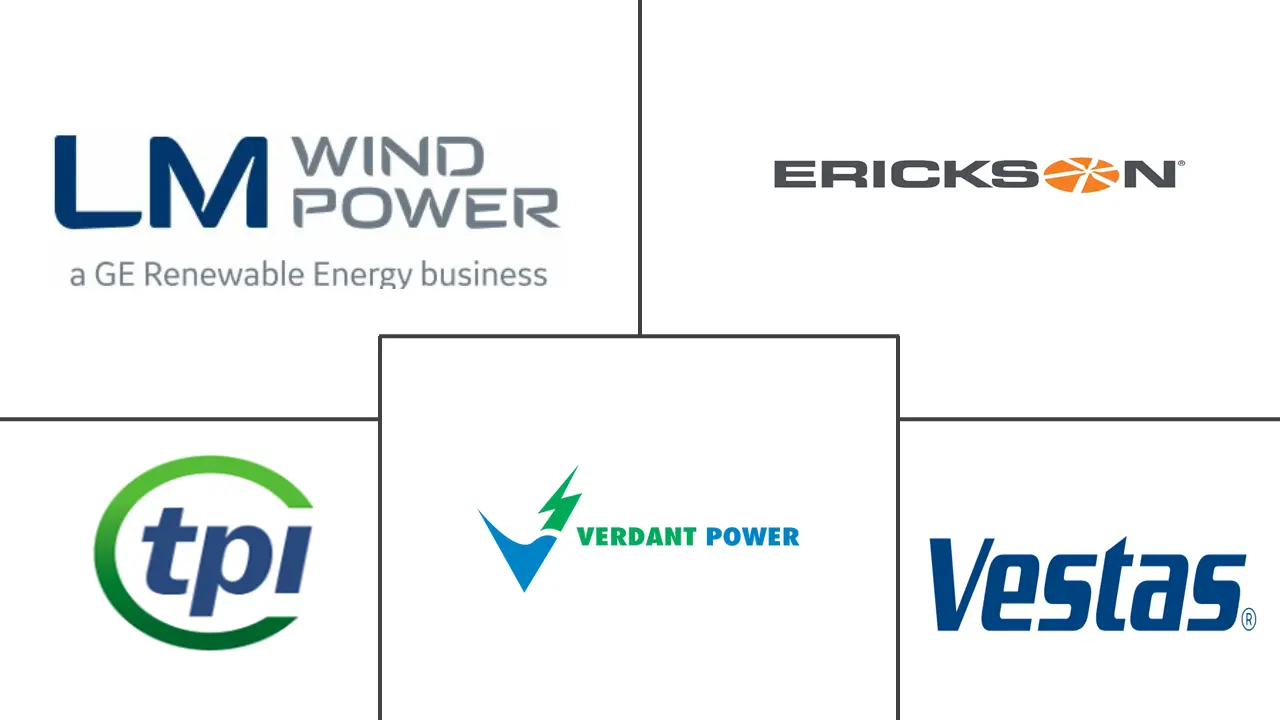North America Rotor Blade Market Size and Share
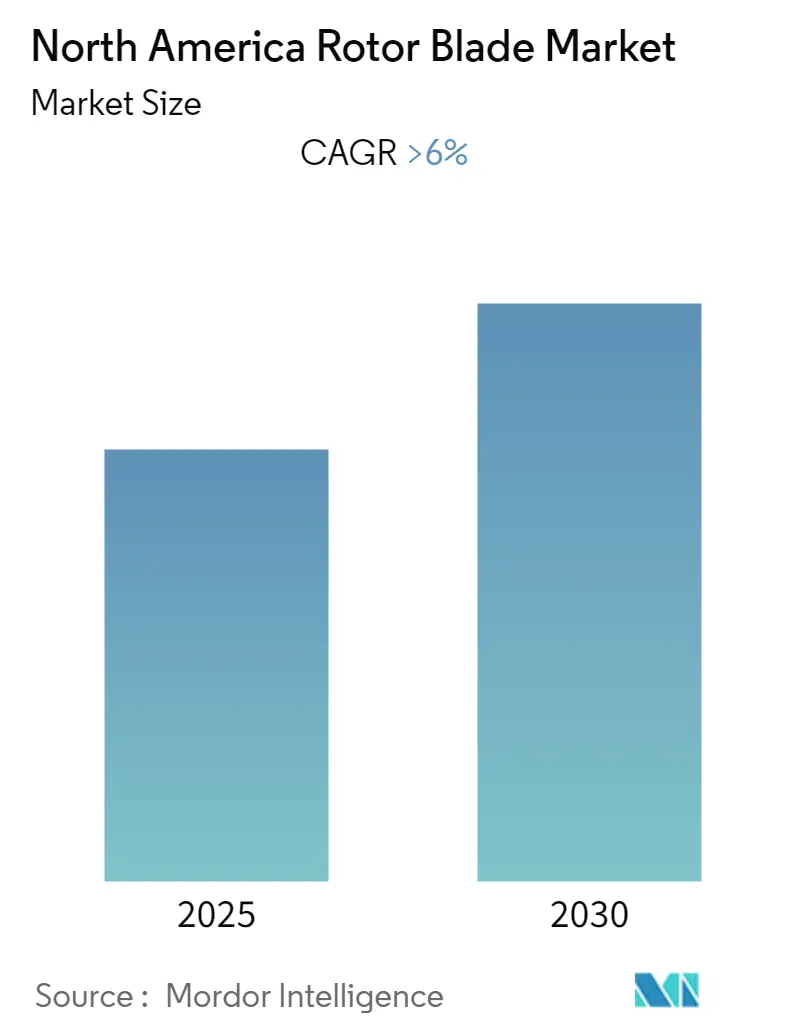
North America Rotor Blade Market Analysis by Mordor Intelligence
The North America Rotor Blade Market is expected to register a CAGR of greater than 6% during the forecast period.
- The market was negatively impacted by COVID-19 in 2020. Currently, the market has reached pre-pandemic levels. Over the long term, supportive government policies and private investments drive the country's rotor blade demand.
- On the flip side, the associated high cost of transportation and cost competitiveness of alternate clean power sources, like solar power, hydropower, etc., have the potential to hinder the market's growth.
- Nevertheless, product innovation and adaptation of the latest rotor blade technologies are expected to create soon lucrative growth opportunities for the France rotor blade market. The United States is expected to dominate the wind turbine rotor blade market, with the increasing demand for wind energy in the country.
North America Rotor Blade Market Trends and Insights
Onshore Segment to Dominate the Market
- Onshore wind energy power generation technology has evolved over the last five years to maximize electricity produced per megawatt capacity installed and to cover more sites with lower wind speeds. Besides this, in recent years, wind turbines have become larger with taller hub heights, broader diameters, and larger wind turbine blades.
- According to the International Renewable Energy Agency (IRENA), in 2022, the North American onshore wind turbine capacity additions registered to be 163.42 GW, an increase of around 5.9% as compared to 2021.
- Moreover, according to the International Energy Agency (IEA), the levelized cost of energy (LCOE) and global weighted average total CAPEX decreased from 76.1 USD/MWh and 1730.5 USD/MWh in 2016 to 48.2 USD/MWh and 1396.3 USD/MWh in 2021. In addition, the LCOE and average weighted CAPEX are expected to decrease to 44.6 USD/MWh and 1338.2 USD/MWh, respectively, by 2025.
- Canada holds North America's second-largest installed wind power capacity, with a total installed capacity of 15.29 GW in 2022. The country increased its installed wind power capacity by around 991 MW in 2021.
- As of 2021, Canada ranked eighth in the globe in terms of total onshore installed capacity, around 2% of the world's onshore wind capacity. According to the Canadian Renewable Energy Association (CREA), Canada has 317 wind energy projects producing power. Additionally, around 31 onshore and offshore wind power projects are planned for five years.
- In 2021, the share of wind energy in the total electricity generation in Canada amounted to 5.86%, which grew as compared to 4.21% in 2015. The development trends indicate not only the increasing investments in the wind sector but also that the size of wind farms is growing. The country is witnessing an increasing number of large wind farms with more than 1.5 MW capacity, such as the Grizzly Bear Creek Wind Project (152 MW) and Wild Rose 2 Wind Project (192 MW) under construction as of 2022. Large-size wind farms are expected to require taller and higher-capacity wind turbines. Hence, the demand for rotor blades is expected to increase during the forecast period
- Therefore, based on the above-mentioned factors, the onshore wind turbine rotor blade is expected to grow due to declining LCOE and reduced CAPEX, coupled with high energy demand through clean sources, during the forecast period.
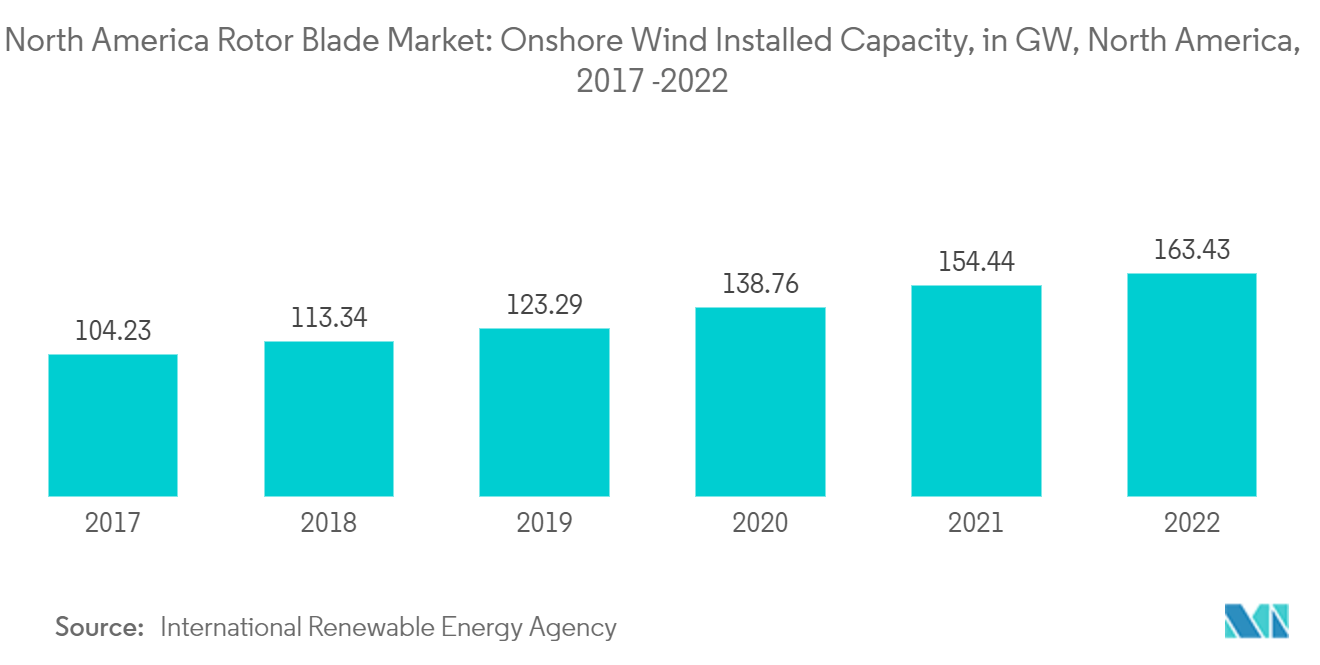
United States to Dominate the Market
- Wind power generation in the United States has grown significantly in recent years. Advances in wind energy technology have decreased the cost of producing electricity from wind. Various Government regulations and financial incentives for renewable energy in the United States and other countries have contributed to growth in large-scale wind power generation.
- The large-scale wind power sector in the United States is receiving immense support from the government due to the America First policy, which aims to boost domestic energy production. The offshore wind power sector is considered a significant development area, as the country has a large coastal area for leasing.
- According to the International Renewable Energy Agency (IRENA), the wind energy market witnessed a significant rise in the total installed wind power capacity. In 2022, the United States wind turbine capacity additions was140.82 GW, an increase of around 5.9% compared to 2021.
- Furthermore, in December 2021, National Renewable Energy Laboratory (NREL) researchers conducted research on a combination of recyclable thermoplastics and additive manufacturing (better known as three-dimensional [3D] printing) to manufacture advanced wind turbine blades. The advance was made possible by funding from the US Department of Energy's Advanced Manufacturing Office-awards designed to stimulate technology innovation, improve the energy productivity of American manufacturing, and enable the manufacturing of cutting-edge products in the United States.
- In September 2022, the Biden-Harris Administration announced that the country's government was launching coordinated actions to develop new floating offshore wind platforms. The country's president, Joe Biden, set a target of deploying 30 gigawatts (GW) offshore wind by 2030.
- Hence, with the number of wind power projects planned and in the pipeline, majorly in offshore locations, the demand for wind turbine rotor blades is expected to increase during the forecast period.
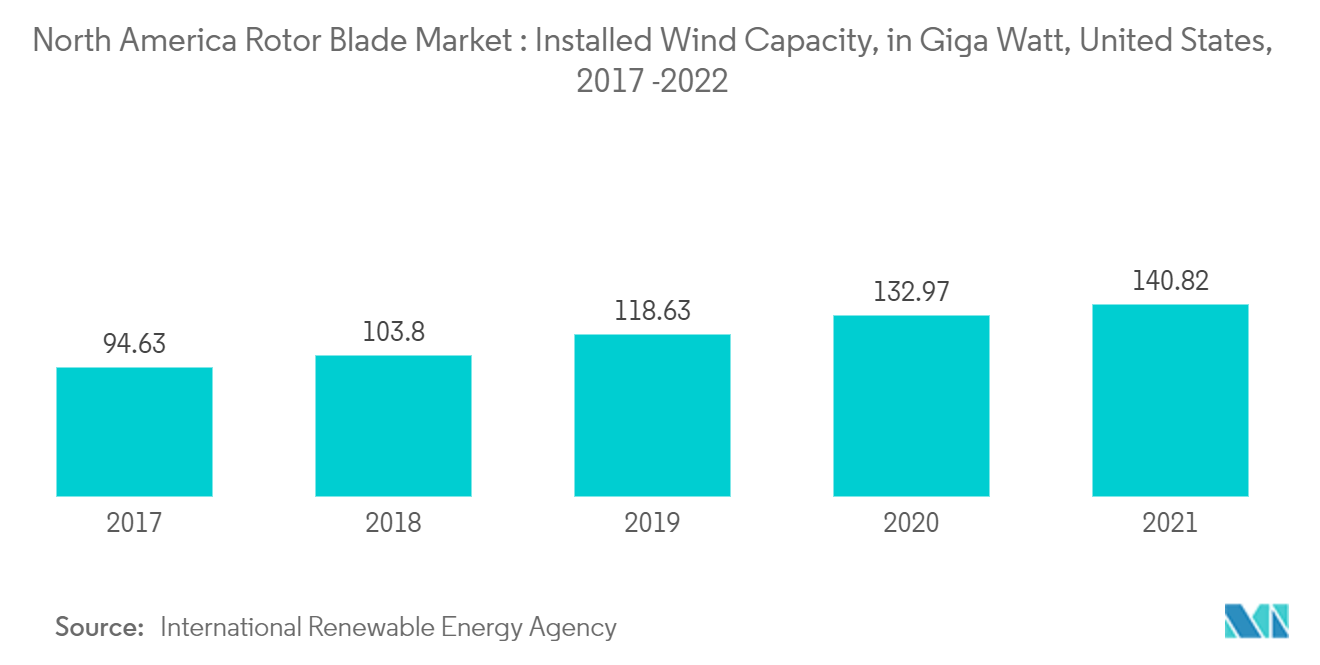
Competitive Landscape
The North American wind turbine rotor blade market is fragmented in nature. Some of the major players in the market (in no particular order) include TPI Composites SA, LM Wind Power (a GE Renewable Energy business), Siemens Gamesa Renewable Energy, S.A., Vestas Wind Systems A/S, and Enercon GmbH., among others.
North America Rotor Blade Industry Leaders
-
TPI Composites SA
-
LM Wind Power (a GE Renewable Energy business)
-
Siemens Gamesa Renewable Energy, S.A
-
Vestas Wind Systems A/S
-
Enercon GmbH
- *Disclaimer: Major Players sorted in no particular order
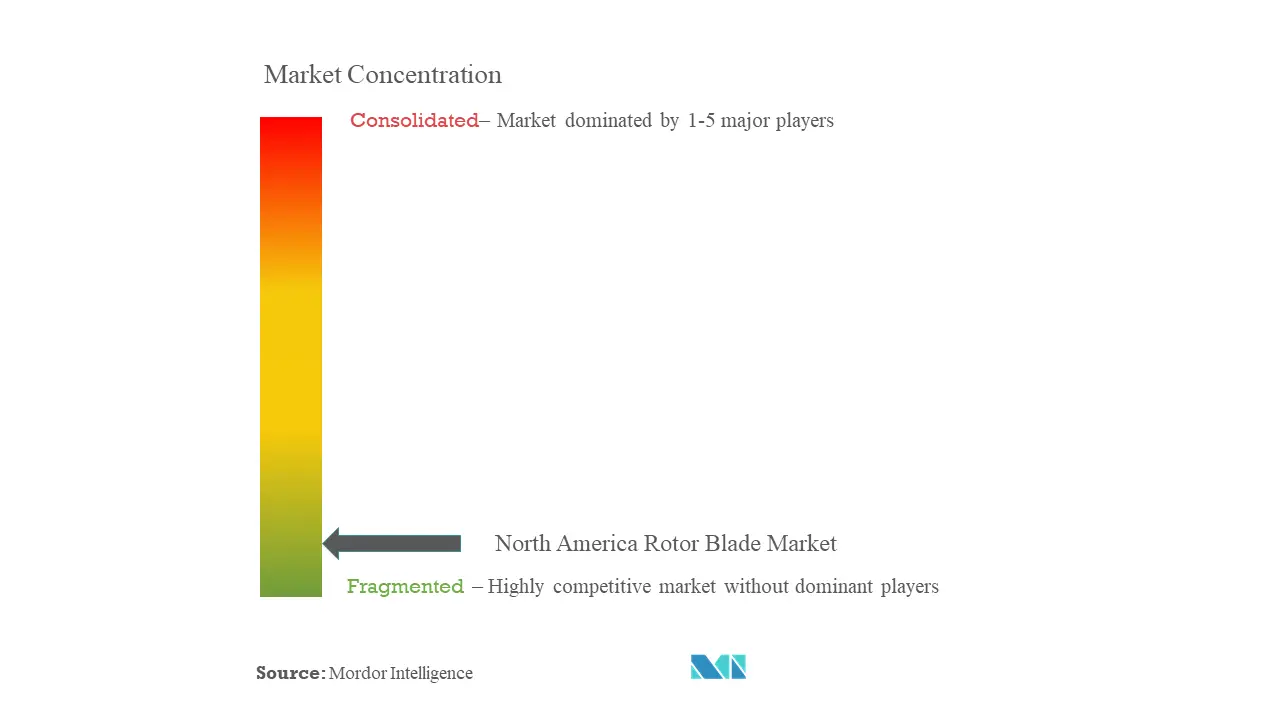
Recent Industry Developments
- October 2022: Ventus launched TripleCMAS to convert the wind turbine rotor and swept area into a condition monitoring and alarm system. This next-generation data-driven rotor monitoring system is based on data collected wirelessly from the rotor. It will convert the rotor and the entire swept area into a measuring instrument for wind turbines.
- May 2022: GE announced the launch of its 3MW Sierra onshore wind turbine in North America, which features a 140-meter rotor with a variety of hub heights. The Sierra turbines will be manufactured in GE's Pensacola, Florida facility, and a large number of the turbine's components will be made in North America as well.
North America Rotor Blade Market Report Scope
Rotor blades are the key components of wind turbines, as they are in direct contact with high-speed winds. Rotor blades convert the wind's kinetic energy into rotational energy, which is later converted into electrical energy.
North America's rotor blade market is segmented by location of deployment, blade material, and geography. By location of deployment, the market is segmented into onshore and offshore. By blade material, the market is segmented by carbon fiber, glass fiber, and other blade materials. The report also covers the market size and forecasts for the wind turbine rotor blade market across the major countries in the region.
For each segment, the market sizing and forecasts have been done based on revenue (USD billion).
| Onshore |
| Offshore |
| Carbon Fiber |
| Glass Fiber |
| Other Blade Materials |
| United States |
| Canada |
| Mexico |
| Location of Deployment | Onshore |
| Offshore | |
| Blade Material | Carbon Fiber |
| Glass Fiber | |
| Other Blade Materials | |
| Geography | United States |
| Canada | |
| Mexico |
Key Questions Answered in the Report
What is the current North America Rotor Blade Market size?
The North America Rotor Blade Market is projected to register a CAGR of greater than 6% during the forecast period (2025-2030)
Who are the key players in North America Rotor Blade Market?
TPI Composites SA, LM Wind Power (a GE Renewable Energy business), Siemens Gamesa Renewable Energy, S.A, Vestas Wind Systems A/S and Enercon GmbH are the major companies operating in the North America Rotor Blade Market.
What years does this North America Rotor Blade Market cover?
The report covers the North America Rotor Blade Market historical market size for years: 2020, 2021, 2022, 2023 and 2024. The report also forecasts the North America Rotor Blade Market size for years: 2025, 2026, 2027, 2028, 2029 and 2030.
Page last updated on:
North America Rotor Blade Market Report
Statistics for the 2025 North America Rotor Blade market share, size and revenue growth rate, created by Mordor Intelligence™ Industry Reports. North America Rotor Blade analysis includes a market forecast outlook for 2025 to 2030 and historical overview. Get a sample of this industry analysis as a free report PDF download.
